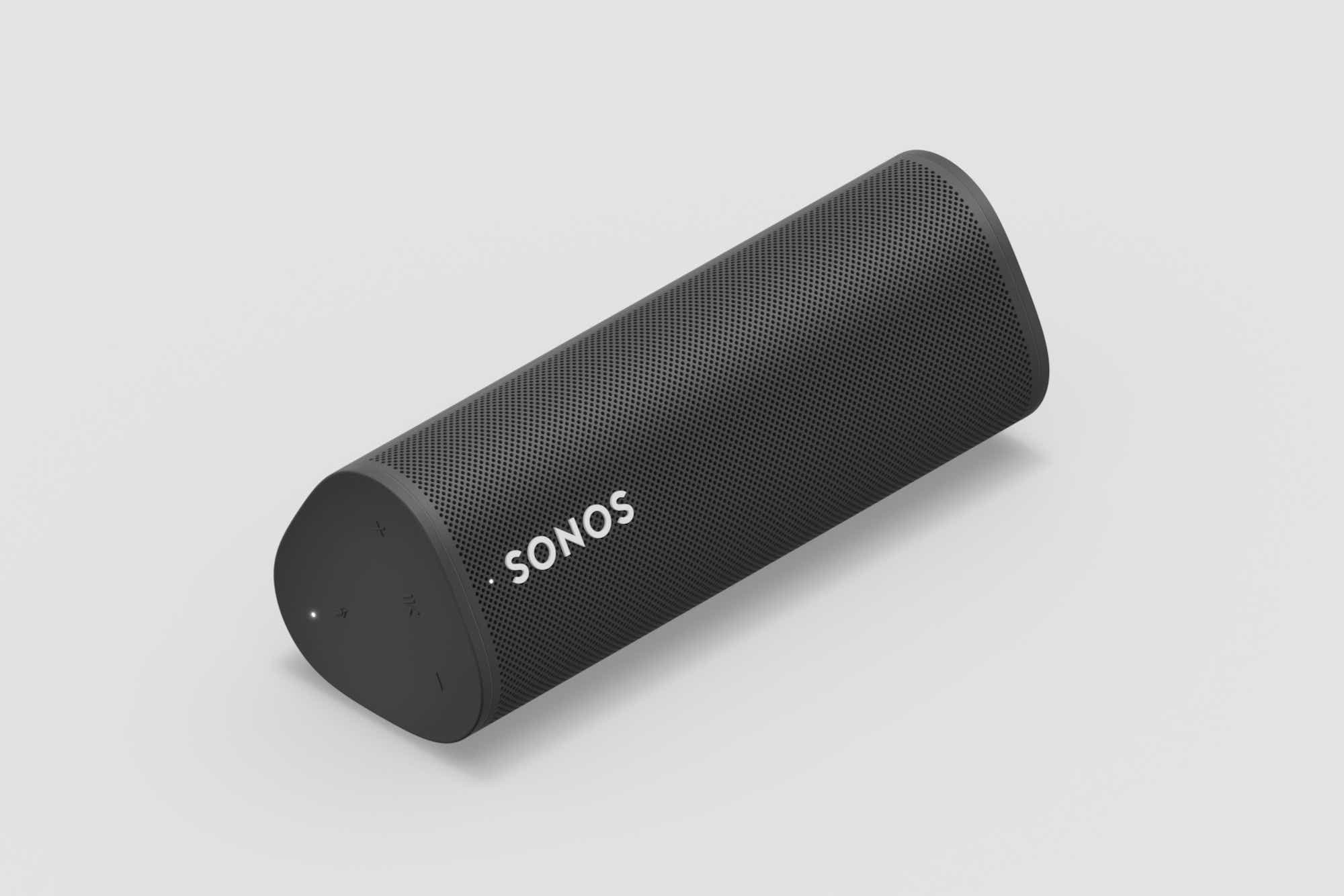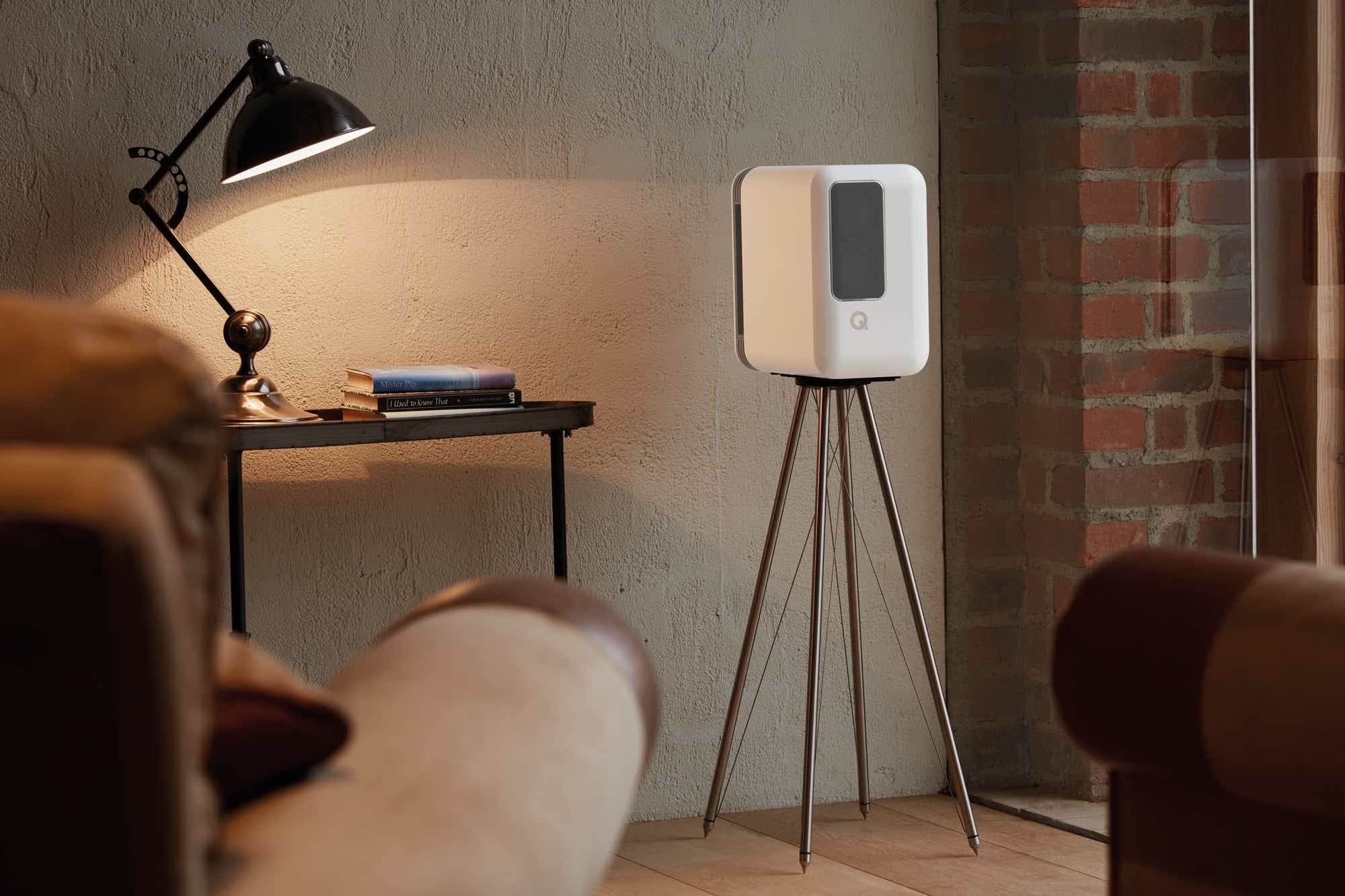Bluetooth speakers were once like jelly beans: They were cheap, they all looked the same, and they were invariably of dubious quality. Luckily, those days are over. Every major audio manufacturer has at least one model on the market today, most have several, and some offer exceptional audio performance. Of course, there’s still plenty of dreck floating around, and that’s where we come in.
We’ve picked the best Bluetooth speakers in six categories: budget, mid-range (up to $300), outdoor, bookshelf, high-end, and even a price-is-no-object selection. Some of our picks can be used indoors and out, but we’ve also named our favorites that are designed primarily as outdoor speakers.
Updated Februrary 13, 2023 to add a link to our Tronsmart Halo 100 speaker review.
Table of Contents
Best Bluetooth speakers
Tronsmart T7 — Best budget Bluetooth speaker

Pros
- Good, thumpy sound
- True Wireless Stereo (TWS)
- IPX7 weatherization
- Very modestly priced
Cons
- Supports only the SBC Bluetooth codec
- Not rated for particulate matter incursion
The Tronsmart T7 looks good, sounds good, will stand up to a bath, and is affordable enough to deploy in stereo pairs. Its IPX7 rating means it can withstand a dunk in the pool for up to 30 minutes, and it’s not rated for particulate matter incursion, we wouldn’t have any qualms about taking it to a beach party.
Read our full
Review Tronsmart T7 Bluetooth speaker
EarFun UBoom L — Best budget Bluetooth speaker, runner-up

Pros
- Good overall sound
- Plenty of thump
- IP67 rated for complete protection from both dust and water
Cons
- Mid-range lacks a bit of definition
The EarFun UBoom L is a fun and punchy speaker that also happens to be completely weatherproof. Powered by a 14-watt-per-channel Class D amplifier driving a pair of 55mm full-range drivers (augmented by a passive radiator at each end), you can enjoy music at the beach or poolside without worry.
Read our full
Review EarFun UBoom L
Edifier MP230 — Best mid-priced Bluetooth speaker

Pros
- Beautiful mid-century modern design
- Surprisingly effective stereo separation in a small speaker
- Can run on battery power
- Satisfyingly clicky control buttons
Cons
- Not designed for rugged use
- Controls hard to see in anything other than direct light
If you’re looking for a small speaker to use on a desktop or bedside table, the Edifier MP230 has excellent audio quality to match its stunning mid-century modern design.
Read our full
Review Edifier MP230
Philips S7807 — Best mid-priced Bluetooth speaker, runner-up

Pros
- Exceptionally good sound
- Plenty of bass
- Great battery life
- Fully weatherized enclosure
Cons
- Very heavy for its size
- No aptX codec support
- No Aux input
- No app for EQ adjustment
The Philips S7807 only connects via Bluetooth, and it plays back your music just as it’s streamed from the source (there’s no way to tweak its EQ). But that’s not a problem, because it sounds fantastic just the way it is.
Read our full
Review Philips S7807 Bluetooth Speaker
Sonos Move — Best outdoor Bluetooth smart speaker

Pros
- Fantastic audio performance, indoors and out
- Automatic Trueplay optimizes audio performance for wherever the speaker is playing
- Amazing range while operating over Wi-Fi
- Long battery life and smart battery-charging tech
Cons
- Highly directional sound stage (it’s wide, but not circular)
- No support for the aptX or aptX HD Bluetooth codecs
- Limited to 16-bit/48kHz resolution
Sonos hit a home run with its first portable Bluetooth speaker. Equipped with a handle, the six-pound Move is as heavy as a bowling ball, but it packs superb audio performance aided by an optimized version of Sonos’s Trueplay technology. The Bluetooth- and Wi-Fi-enabled Move also offers impressive wireless range and long battery life.
Read our full
Review Sonos Move
Sonos Roam — Best portable Bluetooth smart speaker

Pros
- Exceptional sound for its size
- Auto Trueplay works over Bluetooth
- Sound Swap feature lets you “swap” music with other Sonos speakers
- Small and light, with a waterproof design
Cons
- Slow wireless charging (at least with third-party chargers)
- Sound Swap doesn’t work across Wi-Fi, Bluetooth, and AirPlay 2 modes
Small, lightweight, packed with great networking features plus your choice of Alexa or Google Assistant, the sweet-sounding Sonos Roam can connect to other Sonos speakers on your home Wi-Fi network, or via Bluetooth when you’re out and about. Both rugged and waterproof, the Sonos Roam is only about the size of a 500ml water bottle and weighs slightly less than a pound, yet it manages to crank out exceptional sound with a surprising amount of bass–not as much bass as Sonos’s other portable speaker, the Move, but the latter is a much bigger and heavier speaker.
Read our full
Review Sonos Roam
JBL Charge 5 — Best portable Bluetooth speaker, runner-up

Pros
- Dustproof and waterproof
- Gets incredibly loud without distortion
- Solid battery life
- Easy-to-use controls
Cons
- Expensive for its size
- No speakerphone
- No AUX input
The Charge 5 sits in the middle of JBL’s portable Bluetooth speaker lineup–it’s bigger than the Charge 4 but a whole lot smaller than the hulking Extreme 3. Our reviewer praised the speaker for its ability to play extremely loud without crossing over into distortion, as well as how well the manufacturer protects it from the elements (its IP67 rating means it can be submerged in up to one meter of water for up to 30 minutes).
Read our full
Review JBL Charge 5
Soundcore Rave Party 2 — Best Bluetooth party speaker

Pros
- Doesn’t distort at high volume
- Produces a fun light show
- Can be used for karaoke
Cons
- Carries a weatherization rating of only IPX4
- Run-of-the-mill industrial design
Anker specializes in building speakers that punch way above their weight class, and the Soundcore Rave Party 2 fits that description to a T. You can crank it way up without experience annoying distortion, and it will run 24/7 on AC power if think its battery won’t go the distance. It puts on a fun light show, too, and Anker’s technology lets you sync up to 100 speakers together over Bluetooth. If you want a true stereo performance, there’s support for True Wireless Stereo for configuring one speaker as the left channel and a second identical speakers as the right channel. Best of all, the Soundcore Rave Party 2 costs a whole lot less than the speakers it competes with.
Read our full
Review Anker Soundcore Rave Party 2
Soundboks Go — Best Bluetooth speaker for big outdoor parties

Pros
- Impressive volume without distortion
- Sturdy, weatherproof construction
- Excellent stereo sound when paired
Cons
- Initial pairing was a challenge
- Limited inputs
- No support for high-res codecs such as aptX or LDAC
The Soundboks Go isn’t the kind of grab-and-go speaker you take for a picnic in the park, but for those times when you’re looking to entertain a lot of people in a big outdoor environment, there’s nothing quite like it. Resembling an old-school PA system, this large, rugged, weatherproof, battery-powered Bluetooth speaker impressed us with its ability to get loud without distortion, and you can pair two of them for a fantastic stereo experience.
Read our full
Review Soundboks Go
Fluance Ai61 — Best Bluetooth bookshelf speakers

Pros
- Bluetooth, analog, digital, and USB connectivity
- Very good sonics
- Attractively designed
Cons
- No balanced analog audio input
Looking for high-fidelity audio on a budget? Fluance’s Ai61 replace the older Ai60 as our top pick in mid-priced Bluetooth speakers. These are bookshelf models that deliver true stereo performance, and they provide a host of connectivity options, both analog and digital—they’ll even perform as a USB audio device when connected to a personal computer. Our reviewer favorably compared them to the Yamaha studio monitors he relies on for professional mixing sessions. Highly recommended.
Read our full
Review Fluance Ai61 Bluetooth bookshelf speakers
Sonus faber Omnia — Best high-end Bluetooth speaker

Pros
- Incredibly beautiful design
- Impeccable audio performance
- Analog and digital sources, including MM turntables
- Dual-band Wi-Fi, with Apple AirPlay and Chromecast
- Tidal Connect, Spotify Connect, and Roon Ready compatibility
Cons
- Quality and craftsmanship comes at a high price
- Remote control doesn’t rise to the same level
Boasting a beautiful mid-century-modern design aesthetic, the Sonus faber Omnia wireless speaker looks every bit as beautiful as it sounds. And while most people will connect this high-fidelity wireless audio system to their Wi-Fi network to take advantage of its Tidal Connect and Roon Ready features, Bluetooth is a great option to have when guests visit and want to play the music on their smartphones, so you don’t need to hand out your Wi-Fi credentials or concern yourself with setting up a guest network.
Read our full
Review Sonus faber Omnia
Q Acoustics Q Active 200 — Best price-is-no-object Bluetooth speaker

Pros
- Impeccable high-resolution audio performance
- Handles just about any audio source, analog or digital
- Roon Ready
- Clean power to spare
Cons
- Stereo only, there’s no support for any surround-sound formats
- Optional stands are optimal, but they’re also very pricey
Bluetooth support is probably the Q Acoustics Q Active 200’s most mundane feature. This full-fledged audio system consists of a pair of high-end self-powered speakers and a wireless hub that can handle any audio source you can think of. Bluetooth is just one of the Q Active 200’s many connectivity options, along with Wi-Fi, AirPlay 2, and Chromecast, which means you can incorporate the speakers into a high-fidelity multi-room audio system. Yep, the Q Active 200 is expensive, but its high price tag is justified.
Read our full
Review Q Acoustics Q Active 200
Features to look for in a Bluetooth speaker
Not convinced the picks we’ve listed above are exactly right for you? This guide will help you sort through the facts, figures, and specs to determine which speaker will best meet your needs. Your first decision will be to choose between mobile and stationary form factors. The majority of Bluetooth speakers are portable because they get paired with mobile phones, but more and more manufacturers are introducing models designed to remain inside the home.
Choosing a portable model gives you the best of both worlds in some respects, but a stationary speaker is more apt to blend into your home’s decor. And while we’ve heard some pretty spectacular portable Bluetooth speakers, a plug-in model is more likely to produce the sound you’re looking for if fidelity is priority one in your book.
Here are the features you’ll want to evaluate in a Bluetooth speaker:
App support: Companion apps can provide lots of additional features to a speaker that wouldn’t be possible with just physical buttons on the speaker itself. The app might enable more than one person to be the DJ, queuing up songs to play on the speaker. An app might enable you to create customized EQ curves for different styles of music, create wake-up alarms, or power the speaker on and off remotely.
aptX support: Bluetooth audio must be squeezed down in order to stream over the airwaves, and the default codec use lossy compression that throws some of the musical data away. Qualcomm’s aptX codec is lossless, so none of the musical detail is lost in the process. The latest version of aptX–aptX Adaptic–supports loss streaming at up to 24-bit audio at 96kHz. But aptX must be present at both ends of the stream, in the playback device and in the speaker. Most Android devices support aptX, but Apple devices do not.
Battery life: Next to fidelity, a portable speaker’s most important feature is how long it can operate when it’s not plugged into the wall. You should expect a battery to last 10 to 20 hours, but remember that the bigger the battery, the heavier the speaker will be.
Charging options: If your speaker has a battery, it will need to be charged. Speakers that charge their batteries via a USB port are more convenient than models that require an AC adapter, but larger batteries might not offer that option. Some speakers also let you plug in a USB cable to tap their battery to charge your smartphone.
DSP: An onboard digital signal processor (DSP) lets you electronically change how the speaker is driven in order to compensate for speaker placement or the acoustical properties of your room, among other things.
Mounting options and accessories: A portable speaker should be easy to take with you. While some Bluetooth speakers count on their size to make them easy to grip, others provide a lanyard, carabiner clip, or a shoulder strap. It’s even more handy when the manufacturer provides standardized sockets and accessories for mounting the speaker to an object, such as your bike’s handlebars.
Speakerphone: Some Bluetooth speakers have built-in microphones that enable you to use the speaker as a speakerphone in concert with your smartphone. The sound quality will be much better than what you’ll get from your phone, and you’ll be able to turn the volume up much higher. This can be very handy for conference calls.
Stereo pairing: Some speakers let you create a left/right stereo pair with two speakers. tTis works best, of course, when the two speakers are identical.
Weatherization: Portable Bluetooth speakers can be used indoors and out, so the best models provide some protection from the elements. Ideally, the manufacturer will let you know just how much protection you can expect by providing an IP (International Protection) marking. The first digit rates the enclosure’s protection from particulate matter (e.g., dust) and the second digit rates its protection against liquids.
An IP64 code, for instance, indicates that the speaker is completely protected from dust (6) and from water splashed onto it (4). The higher the numbers, the more protection you can expert. IP67, for instance, means the speaker is not only immune to dust, it can be submerged in up to one meter of water for up to 30 minutes. If either digit is replaced by an X, the code indicates that the speaker isn’t rated for protection from that element. particles (this doesn’t necessarily mean that it’s not protected from things like dust, just that the manufacturer doesn’t rate its protection). IPX4, for example, means the manufacturer makes a claim for protection from liquids, but not from particulates.
Wi-Fi: Higher-priced Bluetooth speakers also provide the option of connecting to your Wi-Fi network, so that you can stream music from a NAS box and/or connect directly to streaming music sources such as Spotify or Qobuz. Wi-Fi streams will offer higher fidelity than Bluetooth, even if the speaker supports the aptX codec. A speaker that provides for a hardwired network connection is all the more versatile.
Wireless range: A Bluetooth speaker’s range depends on the power class of its radio, and it can vary widely and is impacted by the environment that it’s operating in. A Class 1 radio offers range of approximately 100 meters, but the number of walls between the Bluetooth source and the speaker and the type of materials in those walls will have a significant impact on range. It’s much easier for radio waves to pass through drywall than masonry, for instance. Objects in the signal path, such as large metal appliances, will reduce that range even further.
Bluetooth speakers that didn’t make the cut
The beautifully designed Beyerdynamic Space boasts outstanding call quality and is easy to use, but its qualities as a music speaker are only good, not great, and it can’t stream in the higher-quality AAC or aptX formats.
The dust- and water-resistant Tribit StormBox Micro 2 pumps out a lot of volume for its size and sounds surprisingly good given its $60 price point. But while this pint-sized monophonic speaker is perfect for tethering to the handlebars of a bike, it’s not really intended for serious listening sessions.
A compact PC soundbar, the Mackie CR StealthBar arrives with a compact design and crisp audio, along with Bluetooth, USB-C, and 3.5mm connectivity, and we’re fans of its removable, height-adjustable feet. That said, the reasonably priced StealthBar suffers from a narrow soundstage, while its passive radiators struggle with deep bass.
The IPX7-rated Tronsmart Splash 1 is perfect for bringing tunes to the beach or the pool, and it promises up to 24 hours of playback time. But if you’re expecting stellar sound from a $30 Bluetooth speaker, you’re barking up the wrong tree; instead, expect good audio rather than great.
The loftily priced Bang & Olufsen Beosound Level boasts a gorgeous design, swappable internal components, and best-of-breed audio fidelity. That said, it’s crazy expensive, and our reviewer was miffed by the speaker’s finicky performance on a mesh Wi-Fi network.
The Bose SoundLink Flex is one of the better-sounding monaural speakers we’ve tested, with a fair amount of boom and a compact, water-resistant design. But the similarly sized and only slightly pricier Sonos Roam has the SoundLink Flex beat with its Wi-Fi and multi-room connectivity, not to mention your choice of built-in Alexa or Google Assistant.
The Audioengine HD3 is a fine-sounding desktop speaker system with excellent build quality. But as with many Bluetooth speakers this small, the bass is a bit weak (a subwoofer would have helped), and it’s limited to 16-bit/44.1 or 48kHz input, shy of high-resolution audio support.
The small, IP67-rated Sony SRS-XB13 Bluetooth speaker is as good as it gets for its diminutive size, delivering more bass than its rivals. Still, the speaker’s bass is somewhat limited, and it can’t get all that loud, meaning it’s not much of a party speaker.


Leave a Reply